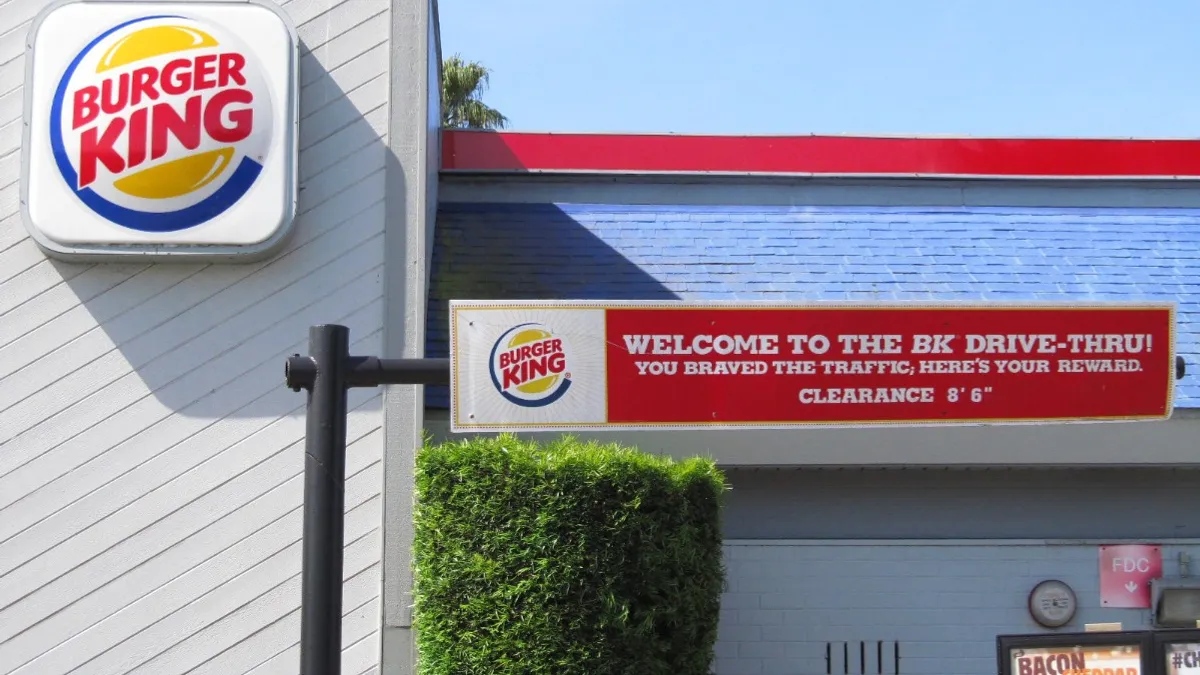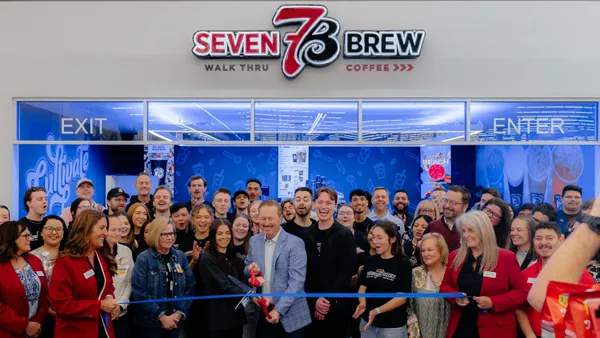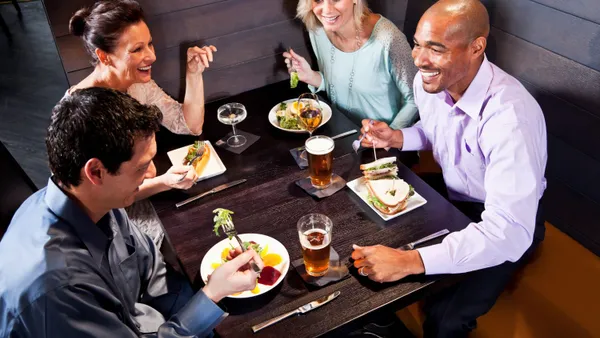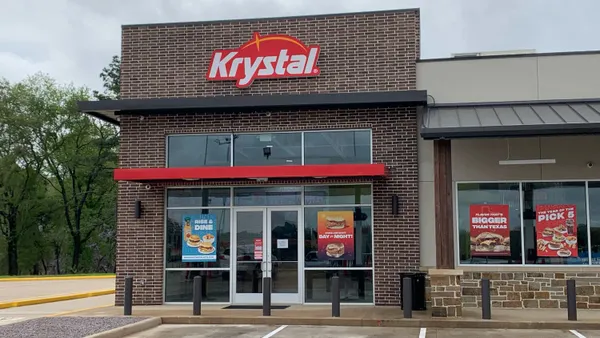Dive Brief:
- COVID-19 restrictions across the country pushed operators to prioritize delivery and mobile ordering capabilities to make up for lost dine-in revenue, according to a TD Bank survey of restaurant franchisees. While 86% of franchisee respondents offered delivery and online ordering prior to the pandemic, 72% have implemented enhancements in these channels since the pandemic.
- Restaurant owners are seeing more value in these channels in the long term. Just 12% of franchisees planned to invest in delivery in 2019 versus 63% this year, while 25% of respondents planned to invest in mobile ordering last year compared to 63% in this year's survey. Additionally, 42% of franchisees have shifted to non-traditional payment methods that eliminate shared devices, cards and cash.
- Fifty percent of franchisees also began limiting hours, 38% trimmed their menus, and 38% added drive-thru capabilities. This trend is reflected by investments in off-premise efficiency by major chains like Shake Shack, which is adding curbside, walk-up windows, pickup areas and drive-thrus to its real estate portfolio, and Taco Bell, which is adding mobile-order-ahead capabilities and double lanes to its drive-thru.
Dive Insight:
The COVID-19 pandemic has forced franchisees to become nimble to overcome restrictions. Mark Wasilefsky, TD Bank's head of restaurant franchise finance group, said restaurant operators have invested "a tremendous amount of time, money and creativity in delivery and mobile ordering," adding that the quick-service space has outpaced other restaurants in adapting to off-premise sales, especially since they tend to have menus that work better for delivery and takeout.
But fast food chains with deep pockets aren't the only concepts getting creative with off-premise channels. Some independents and casual dining chains have added makeshift drive-thrus in their parking lots. Other restaurants have added food truck concepts to survive, while some have turned to modular kitchen pods. One Marco's Pizza franchisee, for example, is testing a pre-fabricated kitchen pod created by Kitchen Podular. The unit is built specifically for takeout, walk-up and delivery service.
These off-premise enhancements and innovations seem worth the effort, particularly in an environment in which dine-in restrictions remain in place in most markets. Delivery and online ordering now account for a higher percentage of sales, reaching 39% in 2020 compared to 20% in 2019, according to TD Bank.
"We expect the shift to off-premise sales to be long lasting, and due to broad consumer acceptance of its added convenience, we believe it will likely become a permanent aspect of many franchises' business models," Wasilefsky said.
Enhancing mobile/ordering capabilities also seems worth the investment. As Chipotle reported Wednesday during its Q3 call, for example, Chipotlane units — those that include an order ahead drive-thru lane — generate 10% higher sales on average than those without. Newer Chipotlanes are higher, at 25%. Chipotlanes are facilitated by mobile payments, another focus area for restaurant franchisees, according to the TD Bank survey.
While 38% of consumers made a mobile payment in 2019, according to the Federal Reserve's Survey of Consumer Payment Choice, COVID-19 has pushed even more consumers toward mobile payments in recent months with in-store payments declining due to lockdowns and ongoing fears of the virus, according to S&P Global Market Intelligence. As such, companies like Burger King and Popeyes are expanding their mobile order and pay capabilities. Olive Garden is asking consumers to use mobile pay to reduce contact, and Starbucks CEO Kevin Johnson predicts that the mobile app will become the dominant form of payment in a post-COVID environment.
Doug Mearkle, head of U.S. Merchant Services Sales at TD Bank, said in the release that COVID-19 has transformed payment offerings such as contactless, mobile and online payments from "nice to haves" to "must haves." He also said that the U.S. has been behind other countries in the adoption of contactless payments, but the pandemic may be a catalyst to catch up.













